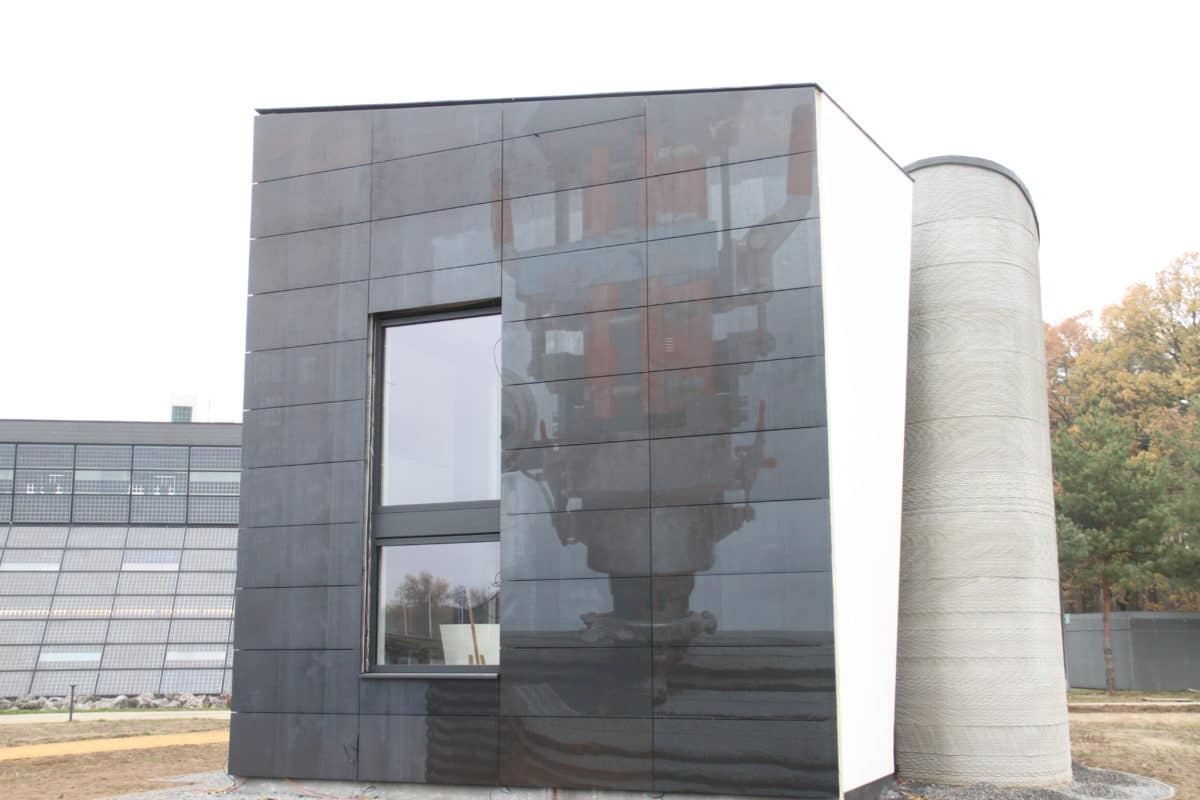Taiwanese BIPV module manufacturer Heliartec Solutions has deployed a solar facade on a 3D-printed concrete house built at the Centre for Sustainability and Innovation in Construction in Westerlo, Belgium.
The components of the two-floor home, which has a height of 8 meters and a total floor area of 90 square meters, were printed with a fixed 3D concrete printer and installed on-site. The building developers printed the entire building envelope in a single piece on site, which they claim is a world first. The prototype was designed to showcase the technology and the potential of 3D printing in the construction business.
“The solar facade was installed within the philosophy of circular construction,” Heliartec Managing Director Andre Feenstra told pv magazine. “The building was optimized for the project to meet the circular vision as much as possible.”
Heliartec said the facade insulation system – with integrated support and control profiles – creates an uninterrupted insulation shield with fire resistance. The solar panels are then installed with invisible anchors on prefab metal profiles. They claimed that this system enables easy removal of the panels at the end of their lifecycles for recycling purposes.
The PV facade relies on Heliartec's Pixasolar BIPV panels. The modules are based on PERC monocrystalline cells and offer an efficiency of 22.5%. They vary in length from 30 cm to 240 cm, with widths ranging from 30 cm to 120 cm. Depending on the size, the panels can offer power outputs of 120 W to 160 W per square meter. The panels weigh 28 kg per square meter and come with a 30-year linear power output guarantee and 10-year product guarantee.
“Especially for renovation and new buildings, the cost of the total Pixasolar solution equals existing gladding solutions, Feenstra explained. “The price is a bit higher for a personalized color or design but has a return on investment in less than five years, compared to standard facade solutions.”
Feenstra added that the energy facade at the Belgian laboratory will pay itself back fully in the next few years. The company produces its Pixasolar panels in Taiwan and China.
“With our selected out-sourcing manufacturing partner's capacity, we can currently deliver around 10.000 sqm of Pixasolar Safety glass monthly and we expect to double our capacity in 2021,” Feenstra said. “We have also planned to have our own manufacturing capacity released in 2022.”
Heliartec Solutions was established in 2017 in Hsinchu, Taiwan. It secured financial support from Taiwan’s National Development Fund last year.
This content is protected by copyright and may not be reused. If you want to cooperate with us and would like to reuse some of our content, please contact: editors@pv-magazine.com.




2 comments
By submitting this form you agree to pv magazine using your data for the purposes of publishing your comment.
Your personal data will only be disclosed or otherwise transmitted to third parties for the purposes of spam filtering or if this is necessary for technical maintenance of the website. Any other transfer to third parties will not take place unless this is justified on the basis of applicable data protection regulations or if pv magazine is legally obliged to do so.
You may revoke this consent at any time with effect for the future, in which case your personal data will be deleted immediately. Otherwise, your data will be deleted if pv magazine has processed your request or the purpose of data storage is fulfilled.
Further information on data privacy can be found in our Data Protection Policy.